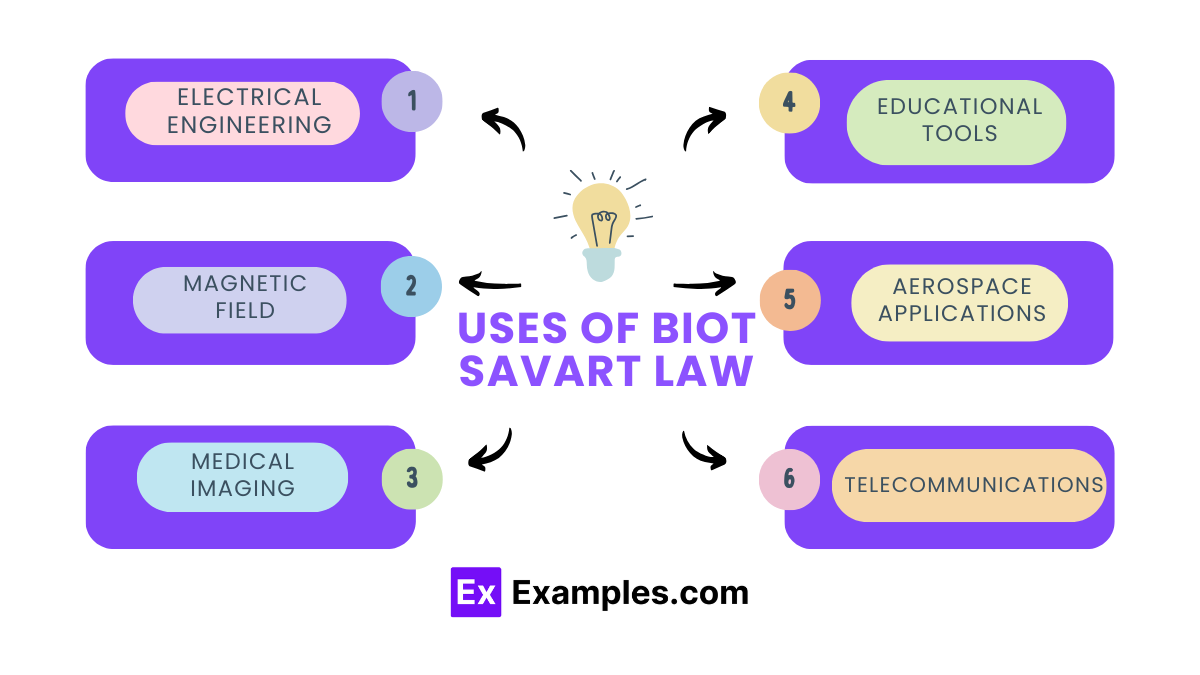What does the Biot-Savart Law calculate?
Electric field due to a charge
Magnetic field due to a current
Gravitational field due to a mass
Potential energy due to a charge


In physics, the Biot-Savart Law is a crucial law of physics that provides a method to calculate the magnetic field generated by a steady current. This law states that the magnetic field produced at a point in space is directly proportional to the current element’s strength and inversely proportional to the square of the distance from the current to the point. The direction of the magnetic field is perpendicular to both the direction of the current. And the line connecting the point and the current, as determined by the right-hand rule.
The formula is expressed as:
This formula helps calculate the magnetic field’s direction and magnitude due to a current in any shape of wire, emphasizing the cross-product which ensures the field direction is perpendicular to both the current direction and the line connecting the point to the current.
This Law is crucial for working with magnetic fields in various settings. It calculates magnetic fields for designing devices like electric motors and generators. This law also helps figure out how different currents affect magnetic fields, important for improving device performance.
Additionally, the Biot-Savart Law is vital in education, helping students understand magnetic fields with practical examples. It also aids in medical advancements, especially in designing MRI machines by modeling necessary magnetic fields for clear images.

The Biot-Savart Law is a vector law because it provides the direction as well as the magnitude of the magnetic field.
The Biot-Savart Law originates from the work of Jean-Baptiste Biot and Félix Savart in 1820, who studied the relationship between electricity and magnetism.
No, the Biot-Savart Law is not an inverse square law. It describes the magnetic field with an inverse cube dependence on the distance from the wire.
Text prompt
Add Tone
10 Examples of Public speaking
20 Examples of Gas lighting
What does the Biot-Savart Law calculate?
Electric field due to a charge
Magnetic field due to a current
Gravitational field due to a mass
Potential energy due to a charge
Which of the following is a key parameter in the Biot-Savart Law?
Charge density
Mass density
Current element
Temperature
In the Biot-Savart Law, the magnetic field is directly proportional to:
Square of the current
Distance from the point of observation
Current in the wire
Voltage across the wire
The Biot-Savart Law is similar to which other law in physics?
Coulomb's Law
Ohm's Law
Newton's Law
Faraday's Law
According to the Biot-Savart Law, the direction of the magnetic field is given by:
Right-hand rule
Left-hand rule
Ampere's Law
Gauss's Law
What is the integral form of the Biot-Savart Law used for?
Calculating magnetic fields from complex current distributions
Determining electric fields from point charges
Measuring resistance in circuits
Finding gravitational forces
The Biot-Savart Law includes a factor of:
ε₀ (permittivity of free space)
μ₀ (permeability of free space)
k (Coulomb's constant)
G (gravitational constant)
In the Biot-Savart Law, what role does the distance from the current element to the point of observation play?
It has no effect
It is inversely proportional to the magnetic field
It is directly proportional to the magnetic field
It squares the magnetic field
Which shape of current-carrying conductor is simplest to apply the Biot-Savart Law to?
Straight wire
Solenoid
Circular loop
Toroid
What quantity is calculated by the cross product in the Biot-Savart Law?
Scalar quantity
Vector quantity
Angle
Current
Before you leave, take our quick quiz to enhance your learning!

